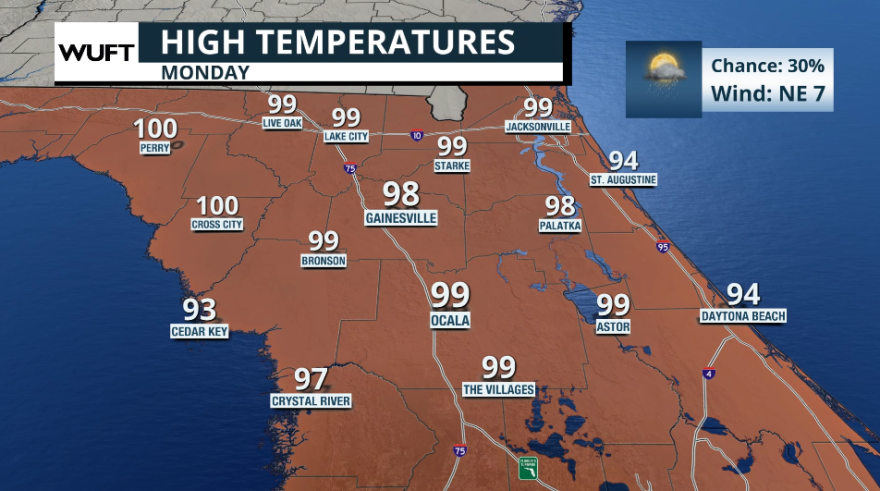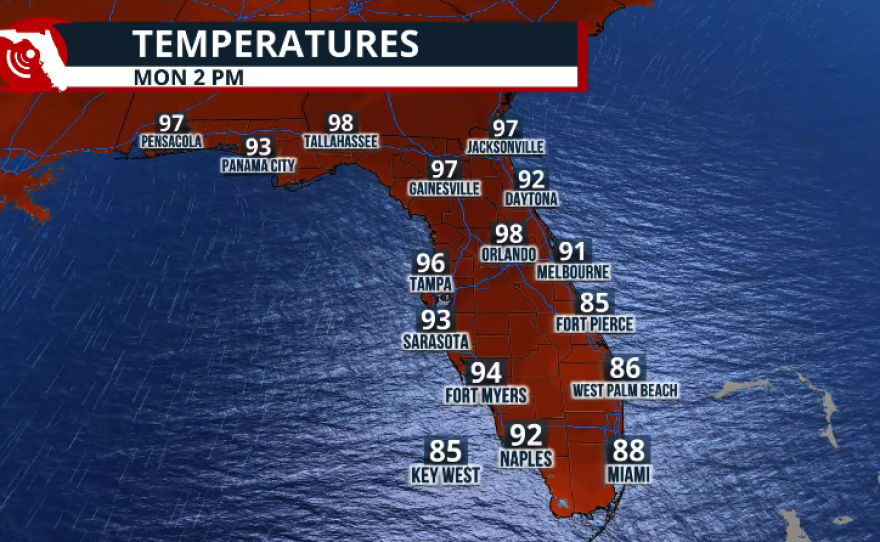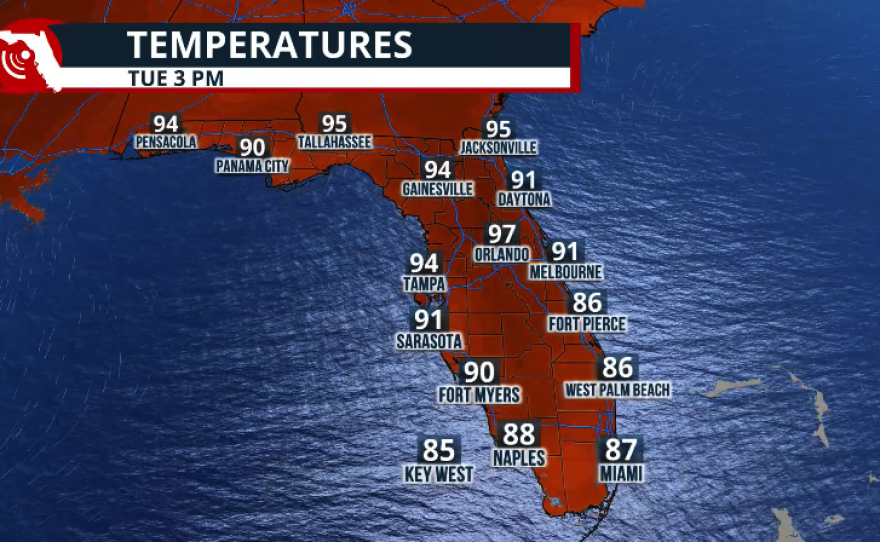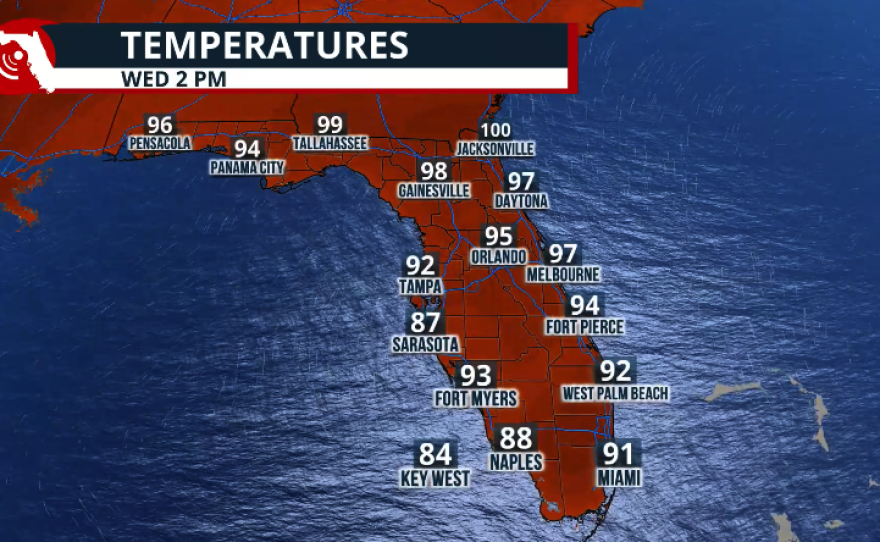Naples set a new high record on Sunday after the official local weather station hit 98 degrees. Tampa set an all-time record of 100°F on Sunday. Records in Tampa go back 135 years.
Contrary to what many coastal residents might be feeling, it is tough to reach 100°F near either coast of Florida. Coastal areas usually stay below 100°F due to sea breezes or onshore flow, while inland regions have time to warm up before the breeze arrives. If they don´t develop storms, these winds warm as they travel over land, keeping the temperatures warmer. For example, Miami has only reached 100°F once, in 1942. Meanwhile, inland locations like Orlando have reached 100°F at least 20 times, and Gainesville has tied or exceeded this mark over 25 times.
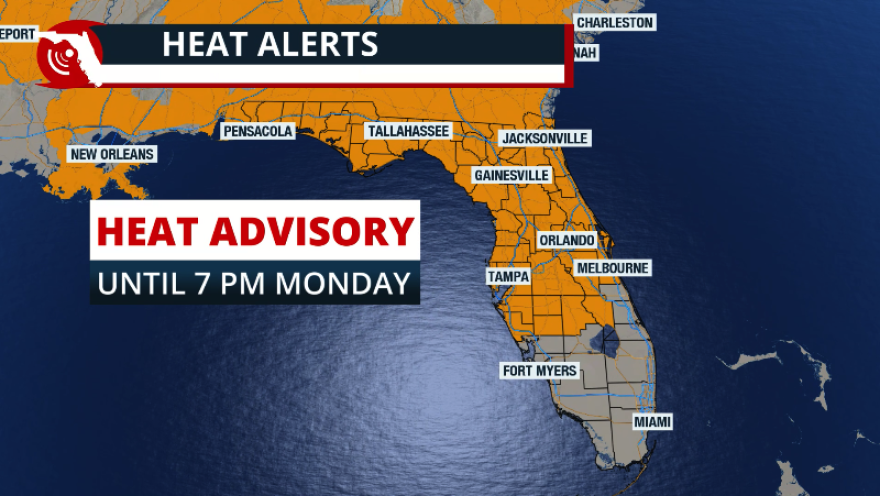
The heat exacerbates illnesses related to these extreme weather conditions. Make sure to drink plenty of water throughout the day. Do not wait until you are thirsty to drink water, as you could you could be dehydrated. Limit your time outdoors, take care of the elderly and kids, as they are more vulnerable to these extremely hot temperatures. If you are outdoors, be sure to take breaks frequently in the shade or, even better, come indoors to air-conditioned areas.
The heat continues through the last week of July.
Heat advisories are in effect across Southwest, Central, North Florida, and the Panhandle. Across South Florida, the humidity has remained slightly lower, keeping the heat indices just below the threshold that activates heat advisories. Heat indices will reach around 103°F in South Florida, but not for a prolonged period, unlike the northern half of Florida. Highs will be between the mid to upper 90s across Central Florida, North Florida, and the Panhandle. South Florida, especially the coastal areas, will continue to experience high temperatures in the low 90s. However, some inland locations, closer to the Everglades, may reach 95°F.
The humidity will make the temperatures across the northern half of Florida at least 103°F. Please stay hydrated; these heat indices are dangerous.
A heat advisory is issued when heat conditions are expected to reach a certain threshold, indicating that conditions could be potentially dangerous and may lead to heat-related illnesses if proper precautions are not taken.
An extreme heat warning is issued when dangerously hot conditions are expected, indicating a potentially life-threatening situation where heat stroke or other serious heat-related illnesses could occur.
When will the heat become ... less intense?
Much of Florida will continue to experience heat advisories, and with temperatures between 5 and 10 degrees above average, at least through Thursday. The good news is that temperatures are on a gradual downward trend, slightly. We are still in summer. But with the high-pressure system moving west, the winds will shift and a cold front will enter the Southeast, providing instability and allowing the sea breezes to return.
Across the Pandhandle, there is a chance for a low-pressure system to increase the storm activity on Tuesday night through Wednesday as it moves through. Storms are likely to move from east to west. Central Florida will have a chance for storms each afternoon as sea breezes ignite storms, mainly after 2 p.m. Near-average storm chances are forecast for the rest of the week. Southwest Florida will likely experience storm activity on Tuesday and then drop to about a 30 percent chance of showers, below average for this time of year, for the rest of the week as a bit of Saharan dust returns to the area.
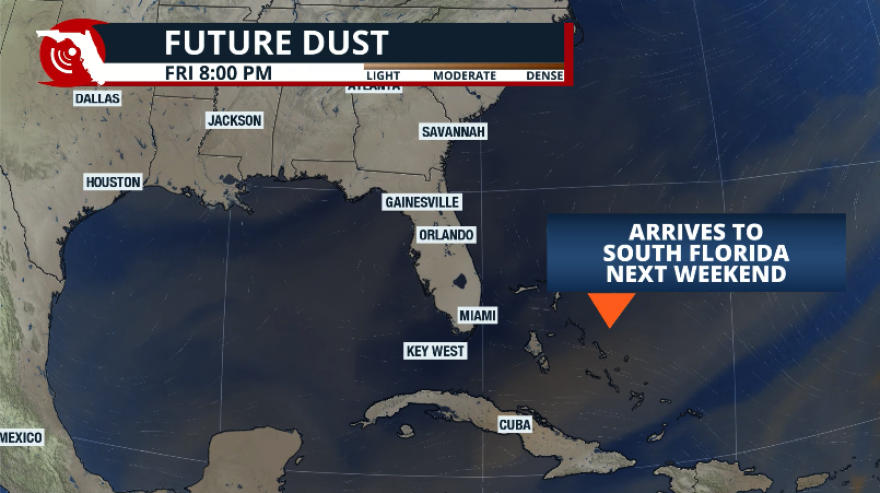
For South Florida, the Saharan dust is also dissipating, which will contribute to the slight decrease in temperatures. A thin layer of moisture could arrive in South Florida by Wednesday, which will keep rain chances to a minimum. Tuesday appears to be the most active day for the Metro areas of southeast Florida, with some storms, but then rain chances drop to around 20 to 30 percent for the rest of the west. The Keys could see more stray showers, but these are mainly due to pockets of moisture in the lower levels of the atmosphere and are unlikely to develop into significant storms.
Tampa broke the all time high record reaching 100° today!!#FLwx https://t.co/PpTGbpXVTn pic.twitter.com/4vLoYoURFY
— NWS Tampa Bay (@NWSTampaBay) July 27, 2025
A record daily high temperature of 98°F was set at Naples (KAPF) today!
— NWS Miami (@NWSMiami) July 27, 2025
This breaks the old record of 97°F set in 1996. pic.twitter.com/aeWyGpKZ8l

